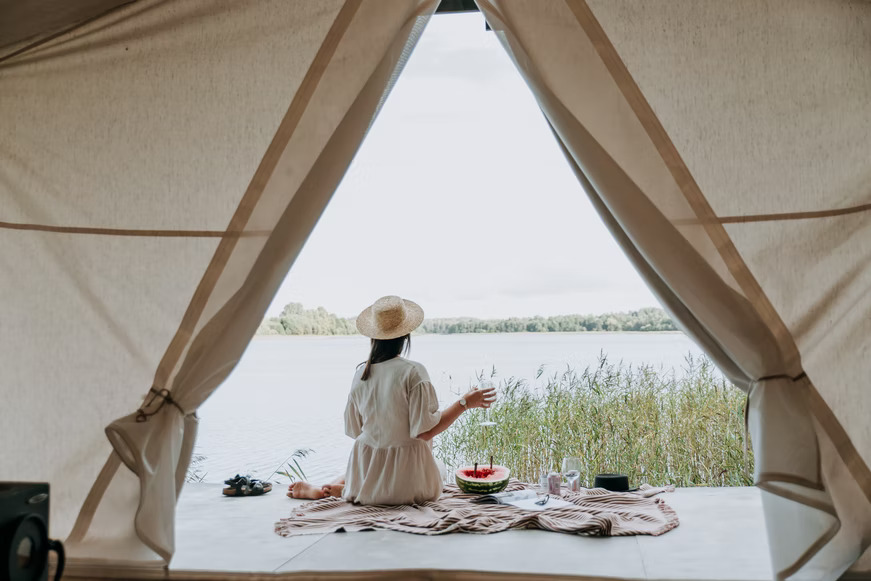When it comes to living your life, you have two choices. Let external factors set the route. Or, take the lead and create a life that brings you joy and fulfillment.
What do you choose?
Lifestyle design is all about intentionally creating the life you want to live. It covers everything in your life. From your health and where to live, to relationships, personal development, career, how you spend your energy, time, money, and more.
Many People Don’t Live, They Exist

Photo by Anubhav Saxena on Unsplash
Many people never figure out who they are, what they want, or how to get there.
The standard 40-hour work-week for 40 years translates to 34% of all your waking hours being consumed by work. With an “extra effort” of 60 hours per week, that’s 51%.
Blending in is often encouraged and little time is left to reflect and live. People are tired.
Instead of exploring dreams and ambitions, they mindlessly consume media and things.
Rapitude puts it perfectly; “We’ve been led into a culture that has been engineered to leave us tired, hungry for indulgence, willing to pay a lot for convenience and entertainment, and most importantly, vaguely dissatisfied with our lives so that we continue wanting things we don’t have. We buy so much because it always seems like something is still missing.”
Lifestyle Design Starts With Ownership

Photo by Cleo Vermij on Unsplash
The sooner you realize that your life is just passing by, the quicker you can start creating a life aligned with who you are.
Designing your ideal lifestyle means being intentional about what kind of life you would like to live and taking responsibility for making it a reality. Instead of waiting for something to happen to you, you go out there and make it happen.
How To Approach Lifestyle Design

Photo by Thought Catalog on Unsplash
To simplify, lifestyled design can be broadly categorized into:
Tangible Factors
These include demographic variables. Such as what you do for a living, your location, and the kind of environment you have at home. Do you prefer living in a city or the countryside? What about the beach? Do you want to move abroad?
You can also ask yourself questions related to your ideal home. Would you prefer a big living space or a smaller, cozier apartment?
Intangible Factors
This includes psychological aspects. Like your likes and dislikes, your values, your belief system, and your interests.
What does an ideal 24-hour day look like for you? Would you like to spend most of your time working or on other activities? What’s your purpose and what will bring you closer to it?
If a belief isn’t serving you anymore, or your career isn’t adding to your fulfillment, don’t be afraid to change it. Change is uncomfortable, but it is also necessary to get to where you want.
Now, let’s dive more into how to design your ideal lifestyle.
1. What’s Your Ideal Lifestyle?

Photo by Laura Chouette on Unsplash
The first step in designing your life is having a picture of what your ideal life looks like. Then it becomes easier to define specific goals and strategies to get there.
Who do you want to be? What kind of people do you want in your life? What does your ideal career trajectory look like? Here are questions to figure out what you want. Knowing what you don’t want it also as helpful!
2. Embrace Continious Exploration

Photo by Toa Heftiba on Unsplash
Even if you don’t have everything figured out, a big part of lifestyle design is continious exploration.
It’s incredible how exciting life becomes when we challenge the ways of how “it should” be lived. From simple things such as how you start your day and being more playful, to bigger areas like principles, relations, career, or choosing not to have a fixed base for years.
Have fun as you try new things, ways, perspectives, and discover new sides of yourself!
3. Take Action (And Change Direction If Needed)
When you start to get clear on what you want, or at least explore further, it’s time for action. Use a tool like Asana or Trello to get an organized overview of your ideal lifestyle.
Create a column for must-haves in your life (freedom, deep connections, an international environment, etc.), nice-to-haves (a house by the ocean, proximity to nature, etc.), and things you would like to avoid (stress, negativity, toxic relationships), etc.
Based on these insights, create a column for different options. Knowing how essential freedom, productivity, and new experiences are for me (must-haves), helped me realize that I should run my own location-independent business (option) instead of having a traditional 9-5 job (avoid), for example.

This is just a simple example of how you can organize your lifestyle plan. You can also add other things such as “areas to explore” etc, your imagination sets the limit
Categorize your options in a way that makes sense to you, such as Career, Lifestyle, Relationships, or however you think about it. You can also set up different boards for different areas in your life (one for Career, Lifestyle, etc).
Add one more column for action points, where you outline what actions you need to take on a short-term and long-term basis to realize your goals or experiment with your options. Specify how you will follow-up and evaluate whether this is something you really want.
Be Flexible With The How’s
You don’t need to know exactly what form something should take at this point. I’ve criteria for my future home-base for example, which I regularly update, and different places match those. Just as different career paths may match your priorities, and so on.
Since you start with the “why” instead of the “what”, you will automatically end up with lifestyle design options based on what’s important to you. Be open to different ways of getting there. As you start to explore, you might discover alternatives you never thought about!
Feeling Stuck? Then This Might Help

Photo by Amos Bar-Zeev on Unsplash
“In a few hundred years, when the history of our time will be written from a long-term perspective, it is likely that the most important event historians will see is not technology, not the Internet, not e-commerce. It is an unprecedented change in the human condition. For the first time—literally—substantial and rapidly growing numbers of people have choices. For the first time, they will have to manage themselves. And society is totally unprepared for it.”
– Peter Drucker
Our reality with so many choices can be overwhelming. While you shouldn’t rush yourself, if you’re feeling stuck, the prominent neurosurgeon Ben Carson method’s for efficient decision-making might help. He used the following 4 questions when deciding to perform risky life-saving brain surgery:
⦁ What is the BEST possible outcome if I DO this?
⦁ What is the WORST possible outcome if I DO this?
⦁ What is the BEST possible outcome if I DON’T do this?
⦁ What is the WORST possible outcome if I DON’T do this?
It helps you evaluate the risk-to-benefit ratio. Pick the option whose benefits outweigh the risks.
4. Review Your Lifestyle Regularly

Photo by Roberto Nickson on Unsplash
Deciding what you want today doesn’t mean you can’t change your mind in the future. Review your situation on a regular basis and change direction when needed. I’ve tweaked my lifestyle a lot over the years, since it’s impossible to predict how things and preferences will evolve.
Have fun as you discover what you want! Once you get clear on your priorities and what kind of lifestyle that gets you excited, it’s easier to feel fulfilled and transform your wants into action. Trust yourself and the process. You can be the boss of your own life. You can be successful irrespective of what your definition of success may be.
The only question is, are you ready to make it happen?









0 Comments